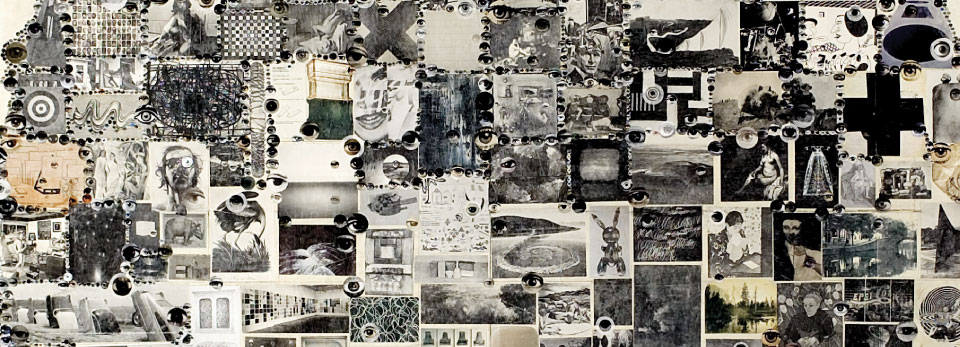


In August, 2016, I wrote about Atlanta-based artist, Fahamu Pecou, and his exhibit, Do or DIE: Affect, Ritual, Resistance, which was held at the Halsey Institute of Contemporary Art. Pecou’s pop culture-inspired works address society’s representation of black males, while utilizing traditional themes of Yoruba and Ifa, West African religious practices. His paintings — raw and beautiful in their truth — felt necessary in 2016 Charleston, a year after a blood-stained Holy City saw the deaths of Walter Scott at the hands of a police officer, and of nine innocent Emanuel AME parishioners at the hands of a white supremacist.
The Halsey put together a catalogue after that exhibit (this is something they do often, in case you ever want to get your hands on a book full of art), titled Visible Man. On Sat. June 9 at 4 p.m., join Pecou and Dr. Anthony Greene for a discussion of the catalogue at CofC’s School of Sciences and Mathematics (202 Calhoun St.), followed by a reception at the Halsey. The event is free to attend and catalogues can be purchased for $34.95.
Visible Man provides an in-depth look at Pecou’s work created over the past two decades. There’s the NEOPOP series, described as, “a host of visual responses to popular culture … Using the conventions of Pop Art, NEOPOP examines the current authority of popular culture, and challenges the notion of fine art’s position in its commodification.” Most of the images in this series are evocative of magazine covers, with titles like ‘Cream, The Arts Issue,’ ‘Flaunt,’ ‘metro.pop.’ The titles of the pieces read like a how-to guide on satirizing stereotypes of black culture: “Shut Yo Mouth,” “All This Without a Basketball,” “Immaculate Percep’shun,” “And I Ain’t Been Shot a Whole Buncha Times.”
READ THE FULL STORY [+]
Pops of Uber modernity peek out from Jiha Moon’s paintings. There’s the familiar if grimace-inducing lowercase “f” of the Facebook logo tucked into “Forever Couplehood” (2014), for example, or the Starbucks siren hiding behind a cloud in “Double Bless” (2012). Scores of icons compete for the surface of Moon’s paintings. Most of them hail from impossible realms. Picture the serenity of a late 19th-century Korean landscape painting invaded by a hostile force of 21st-century #brands and that might approach the level of manic fantasy that Moon sustains throughout her latest survey.
…
Moon’s work only has one volume, and it’s a roar. That works for this show (which was assembled by the Taubman Museum of Art in Roanoke, Virginia, and the Halsey Institute of Contemporary Art in Charleston, South Carolina). Humming with vibrational energy, Moon’s paintings scale down to the level of detail of Hieronymus Bosch. Her compositions scale up to the sweep of the Joseon Dynasty landscape painter Jang Seung-eop. Big and small, majestic and giggly, Moon’s work dwells there, between the two.
READ THE FULL STORY [+]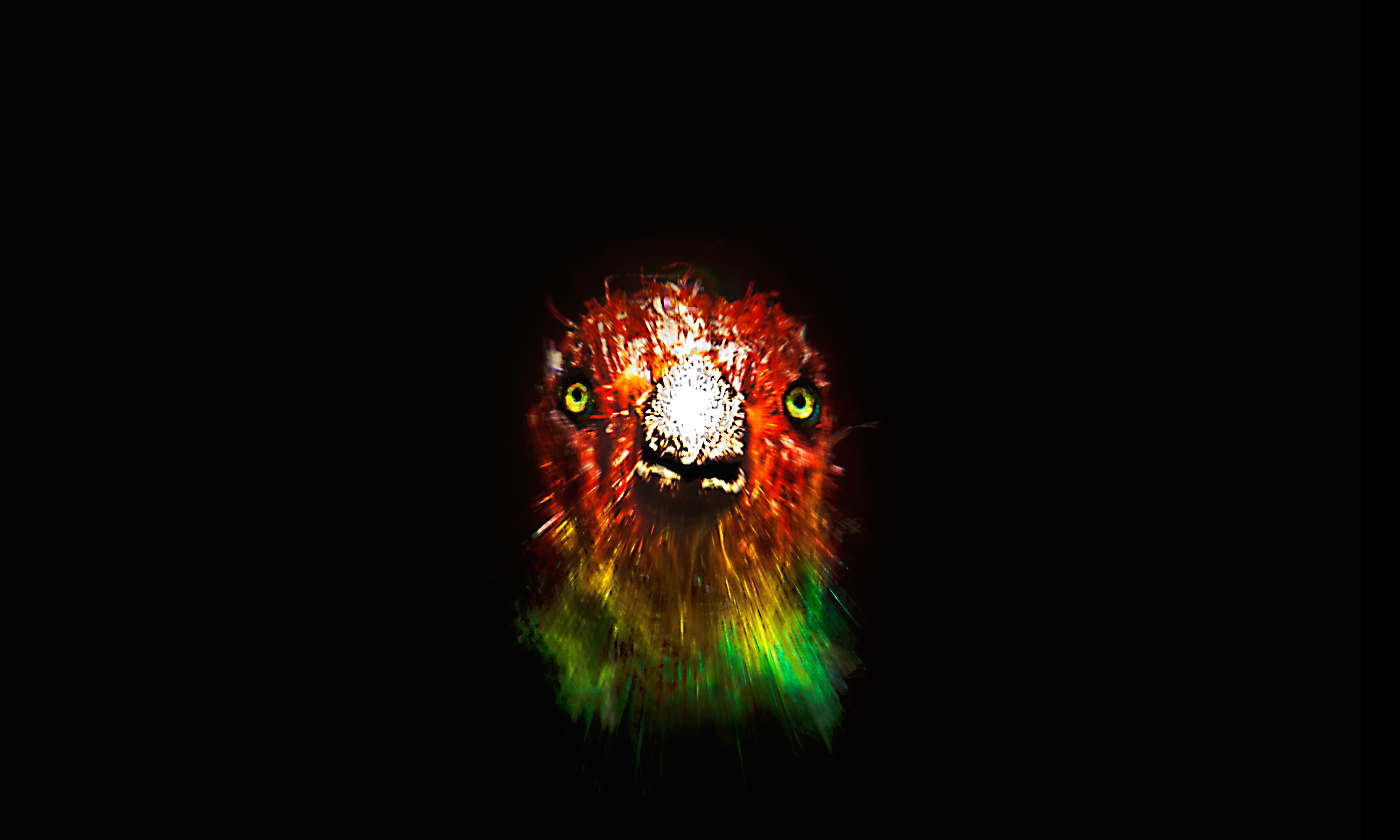
Welcome to the domain of ghosts, where you pass through the mists of time and come face to face with victims of human greed and disregard.
But don’t worry: it’s all quirky good fun.
The German installation artists Matthias Boehler and Christian Orendt are bringing their clever, oddball art to the Halsey Institute of Contemporary Art in the form of a weird and wonderful walk-through show that stars nine extinct animals.
“The Carrion Cheer: A Faunistic Tragedy” is funny and serious at the same time. It opens May 18 and runs through July 7. Enter tents set up in the galleries for the purpose of confronting animated, talking versions of your victims: the white-crested jumping spider of Hawaii, Pinta Island tortoise, Yangtze River dolphin, bluebuck antelope of South Africa, great auk of the North Atlantic, Carolina parakeet, Honshu wolf of Japan, Stellar’s sea cow of the Bering Sea and pig-footed bandicoot of Australia.
The creatures, presented as computer-generated images projected onto a mist, seem ghostly indeed as they sing a sloppy song of forgiveness, describe how they died off, and cheer us humans on. Silhouette drawings reminiscent of cave paintings line the interior of the structures.
READ THE FULL STORY [+]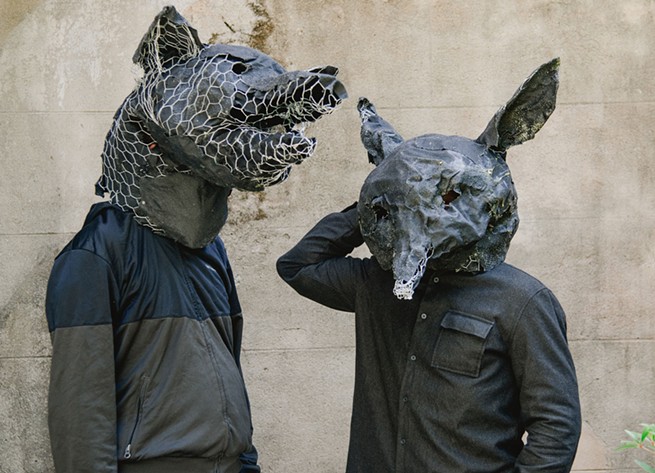
Entering The Carrion Cheer: A Faunistic Tragedy, a new multimedia installation at the Halsey Institute of Contemporary Art, is like entering some sort of warped, disturbing fever dream. You’re led on a path through nine different tents that take up virtually the entire 3,000 sq. ft. floor space of the Halsey. Inside each tent is a series of haunting images. White silhouettes appear against a black surface on one side of the tent, depicting an animal, perhaps an insect or mammal or bird, being hunted and killed, but in a distorted, abstract fashion.
But your attention will quickly be drawn to the main image in the tent; an apparition of the same type of animal shown in the silhouettes, projected in a ghostly fashion onto a screen of mist. The animals, perhaps a Steller’s sea cow (Hydrodamalis gigas) or a Carolina parakeet (Conuropsis carolinensis), or a Yangtze River dolphin (Lipotes vexillifer) might not look entirely familiar to you, and that’s because all nine of the animals in The Carrion Cheer exhibit, created by German artists and collaborators Matthias Böhler and Christian Orendt, are extinct. In some cases, no one’s seen one of these animals for over 200 years, in others, it’s only been a few since they vanished.
READ THE FULL STORY [+]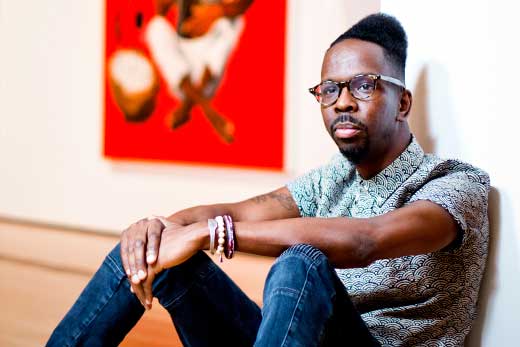
Not every PhD candidate has elements of their dissertation displayed in an art gallery, but Fahamu Pecou has never followed the typical path for a doctoral student.
Among the 275 students set to receive PhDs from Emory’s Laney Graduate School next week, Pecou has already been making headlines — a thinking person’s artist and an emerging force in the art world with works that explore challenging issues of black identity and cultural representation.
…
His work is already receiving critical acclaim. Presented at the Halsey Institute of Contemporary Art in Charleston, South Carolina, in collaboration with the Michael C. Carlos Museum at Emory, “Do or Die” is now touring the country and will be installed at the Carlos Museum in January 2019.
READ THE FULL STORY [+]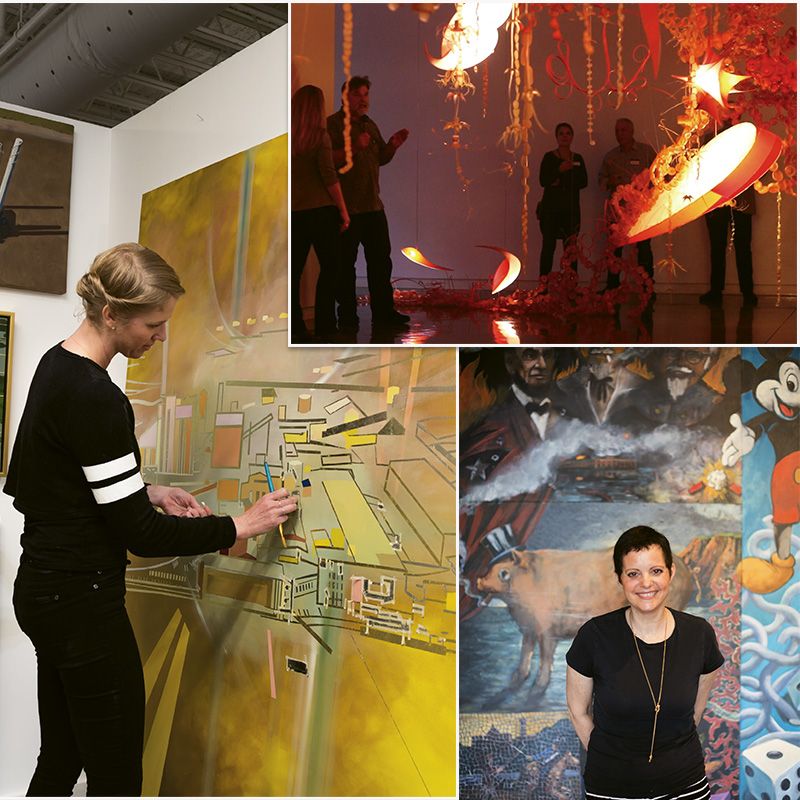
Charleston’s growth has been a boon for, and in part driven by, its creative community. The return of festival season is a good opportunity to take its pulse and peek backstage at the studios, galleries, and theaters of our evolving and maturing arts scene.
There was a moment when it all coalesced. May 27, 2016: opening night of Spoleto’s Porgy and Bess at the Charleston Gaillard Center. Exuberant costumes in candy-store colors designed by the Lowcountry’s own Jonathan Green; Gershwin’s score, written right here nearly a century ago, roused to melodic brilliance by an orchestra that included some local musicians: a story from our past brought to life in a dazzling new theater heralding a promising future. All headlining the 40th anniversary of a festival that put Charleston on the international cultural map.
…
The state of the arts in greater Charleston is thriving, affirms Scott Watson, head of the city’s Office of Cultural Affairs. “The arts imbue every corner of this community, coexisting alongside oyster roasts and wildlife expos. Our artists and arts organizations are highly visible, celebrated, and resilient,” says Watson. And every arts organization leader interviewed for this story echoes his assessment. They report that their audiences as a whole are healthy and growing. The range of exposure of various forms of art presented by artists both emerging and established is more diverse than ever, and becoming even more so. Yet when Mark Sloan moved to Charleston to take the helm of the Halsey Institute of Contemporary Art (then called the Halsey Gallery) nearly 24 years ago, he found a very different cultural landscape.
READ THE FULL STORY [+]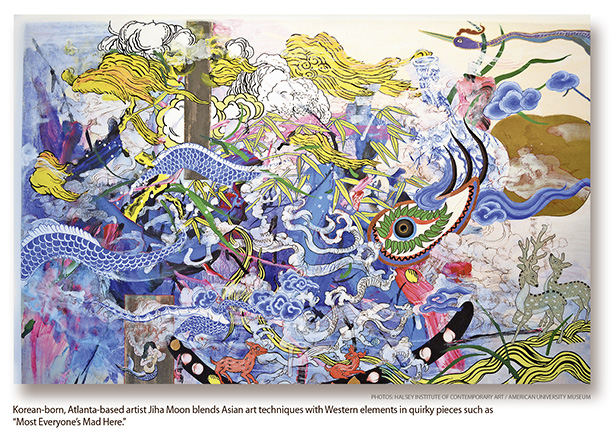
A kaleidoscope of colors, pop culture references and traditional Asian art techniques collide in “Jiha Moon: Double Welcome, Most Everyone’s Mad Here,” an exhibition suffused with both satirical whimsy and contemporary relevance.
The show, at the American University Museum, is a quirky surprise from an artist who revels in playing games and posing probing questions. Images of Angry Birds and emojis mix with Asian tigers and Indian gods in compositions that incorporate Eastern art techniques and iconography through the use of Hanji paper and Korean silk, peaches and fans. It’s a fun, irreverent show that blurs the lines between East and West, the familiar and the foreign, using small details to ask big questions about racial perceptions, technology and global identity.
“I think that Jiha Moon’s work has this really universal appeal to it. It’s colorful, there are a lot of references to popular culture, but the more you look at it, the more you realize she’s making very smart and sometimes satirical commentary about objects or imagery that have been associated with Asian culture [but] not necessarily part of Asian culture,” curator Amy Moorefield told The Washington Diplomat.
Take, for instance, Moon’s use of fortune cookies. The artist’s ceramic fortune cookies reflect the history and interplay of cultures that characterizes the core of her work. As Moorefield noted, “Fortune cookies have been sort of assigned to China or Asia, but they were developed in California. It’s really a smart way of her responding as an artist, who was born in Korea but lives in Atlanta, to say, ‘Hey, I’m not defined by one culture. I’m defined by many. And my work embraces all of that.’”
Look closely and visitors will see the all-too-familiar Facebook “F” logo, followed closely by a horseshoe — really, a “U” — a symbol of good luck. “I don’t want my work to appear whiny or too serious about it. I always love humor and jokes in art,” Moon said in a video about this show produced by the Halsey Institute of Contemporary Art.
READ THE FULL STORY [+]
East and West converge in different ways in the work of Miya Ando and Jiha Moon, two Asia-rooted female artists who have shows in adjacent galleries at the American University Museum. While Moon’s art includes some conspicuous American ingredients, Ando’s work might seem to be purely Asian.
Unlike Moon, Ando is a lifelong American citizen. She was born in Los Angeles to a Japanese mother and an American father of Russian Jewish heritage. Moon was born and educated in South Korea before earning an M.A. in Iowa, moving to Washington and then settling in Atlanta.
…
No muscle cars are evident in Jiha Moon’s “Double Welcome, Most Everyone’s Mad Here,” but there are many other American things. Smiley faces, video-game characters and Pennsylvania Dutch folk symbols jostle in the artist’s busy collage-paintings, alongside Asian-style birds, tigers, dragons and flowers. Peaches represent fecundity in Asia, as well as Moon’s now-home of Georgia. “I am a cartographer of cultures,” she writes in her artist’s statement.
The balance is tipped more toward East than West, in part because many of the pieces are painted on fan-shaped pieces of Korean-made mulberry paper. The dominant visual motifs are usually Asian, although acrylic paint is paired with ink, and shards of text employ the Latin alphabet as well as Korean and Chinese writing systems.
READ THE FULL STORY [+]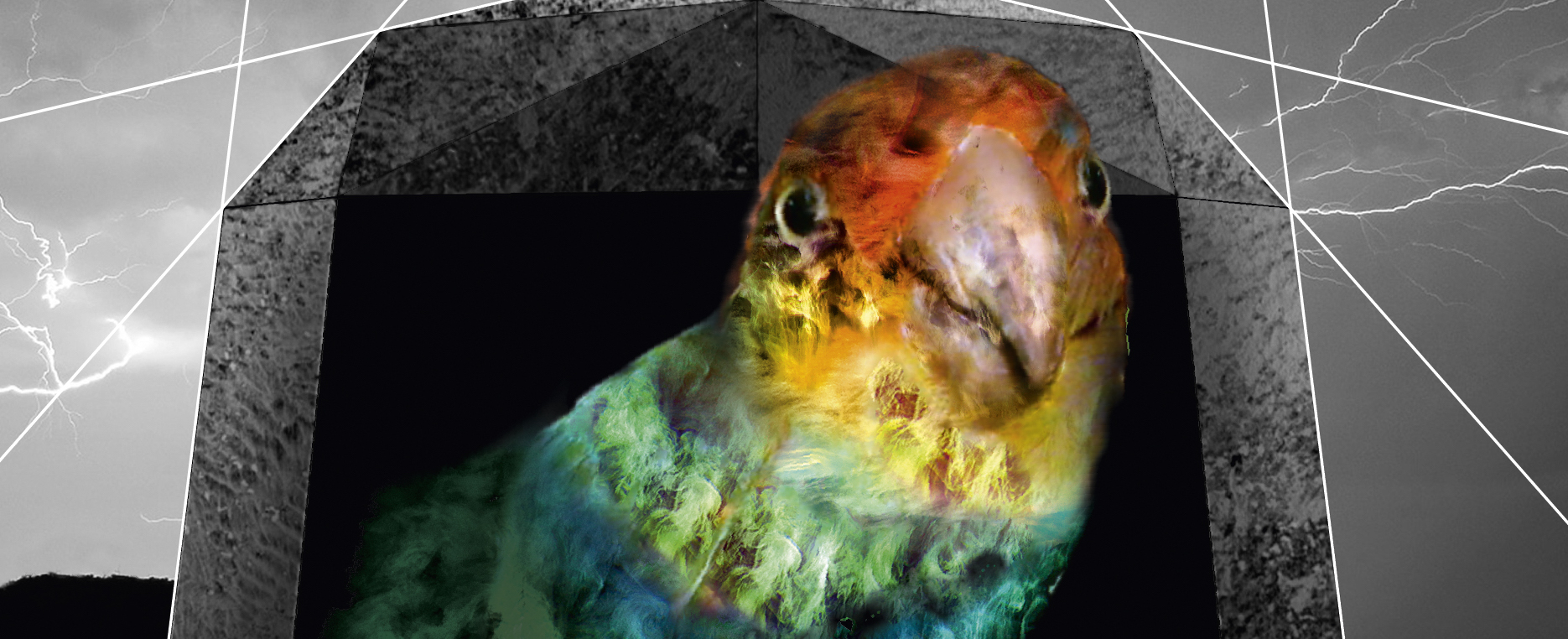
Earlier this year I met with Halsey Institute of Contemporary Art director Mark Sloan and manager of outreach and engagement Lizz Biswell. The two excitedly shared the Halsey’s upcoming exhibits — from the passion of emerging artists in Young Contemporaries to the raw realities of the Southern United States in Southbound, each exhibit piques the interest of art lovers of all stripes.
But the exhibit Sloan and Biswell were most excited about is one that opens this May in conjunction with Piccolo Spoleto, The Carrion Cheer: A Faunistic Tragedy, the first United States solo exhibition from artists Matthias Böhler and Christian Orendt, curated by the Halsey’s manager of exhibitions and programs, Bryan Granger.
The reason for Sloan and Biswell’s excitement? Well, it’s likely got a lot to do with the uncertain nature of the exhibit — neither the Halsey nor the artists, Böhler and Orendt, know exactly what will happen. Here’s the deal: Böhler and Orendt (who are currently in town building components of the exhibit) are constructing a “makeshift trans-dimensional stopover camp,” featuring several tents that guests can walk through.
READ THE FULL STORY [+]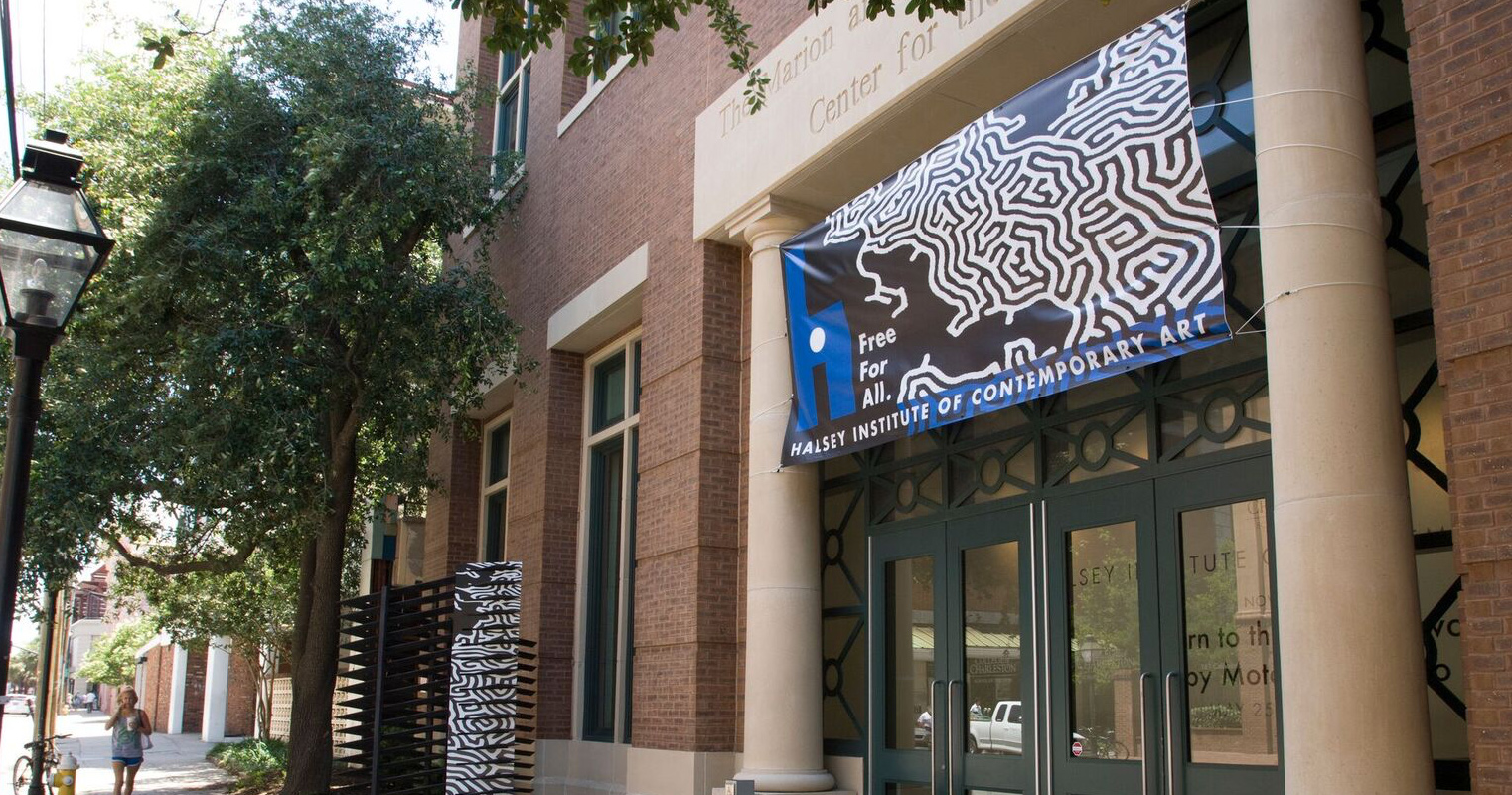
The idea, Roefs added, is to extend the amount of time people spend in Lake City for art. By having more exhibitions and public art, it’s hoped that more people will make a two- or three-hour drive from larger areas and maybe even spend a night or two in the town to check out all of the art and activities connected with it. In other words, the idea is to make Lake City into a year-round arts destination.
“TRAX is instantly one of the best art centers in South Carolina in terms of linear wall space and square footage,” Roefs said. “The three big ones in the state are the Halsey Institute at the College of Charleston, 701 Center for Contemporary Arts in Columbia, and, now, the TRAX Visual Arts Center in Lake City.”
As the center just opened, assessing the effect will take time. However, Roefs added that he’s heard and seen the crowds at ArtFields are bigger this year than they have been.